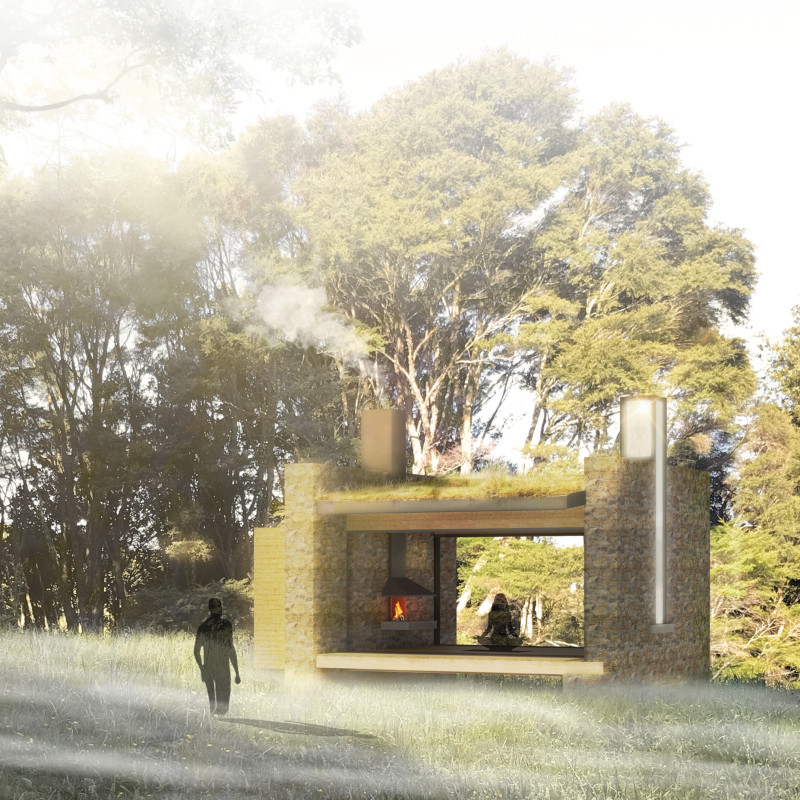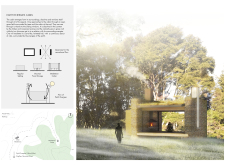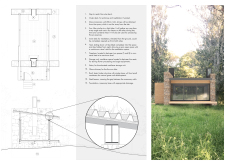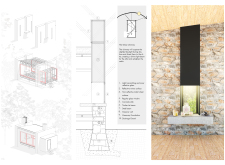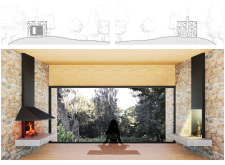5 key facts about this project
The design employs an emergent form that responds to the topography and vegetation of the site. The central configuration includes a primary hall flanked by spaces dedicated to meditation and relaxation. Extensive use of windows throughout enables visual continuity with the external environment, allowing natural light to penetrate and creating a sense of openness in the interior.
Innovative Design Approaches
One distinguishing feature of the Earth Energies Cabin is the incorporation of a glass chimney, which serves a dual function as a source of light and a component of the heating system. This element not only enhances natural lighting but also symbolically connects the occupants to the earth and sky. The design prioritizes the interplay of light within the meditation spaces, effectively creating a serene atmosphere conducive to mindfulness practices.
The project features a sun altar, a specially curated area that collects sunlight throughout the day, enhancing spiritual engagements within the cabin. This feature reflects the emphasis on natural forces and suggests a dialogue between architecture and spiritual practice. The flexible layout allows various activities to be accommodated, making the space adaptable to individual or group needs.
Material Selection and Sustainability
Materiality plays a pivotal role in the project’s design. The use of local stone masonry for walls provides structural integrity and thermal mass, while timber elements in the roof and framing contribute to sustainability and a biophilic connection to the surrounding environment. Large glass panels further enhance transparency, blurring the lines between interior and exterior spaces.
Concrete is employed in the foundations and select structural elements, ensuring durability and robust support for the overall design. The combination of these materials highlights a thoughtful approach to construction, focusing on ecological compatibility while also advocating for modern aesthetic principles.
The Earth Energies Cabin exemplifies an architectural approach that harmonizes with nature, prioritizing user experience and environmental responsibility. The innovative integration of form, materials, and unique design elements makes it a notable example of modern architecture. For more insights into this project, including architectural plans, sections, and design ideas, readers are encouraged to explore the complete project presentation.


